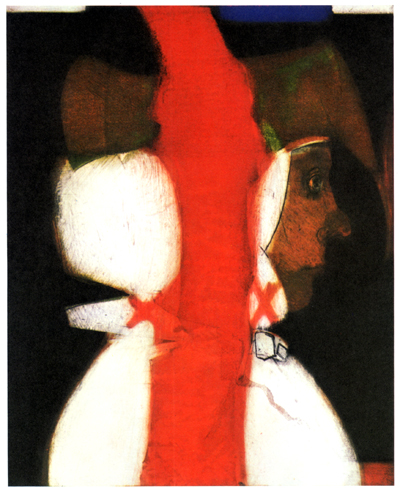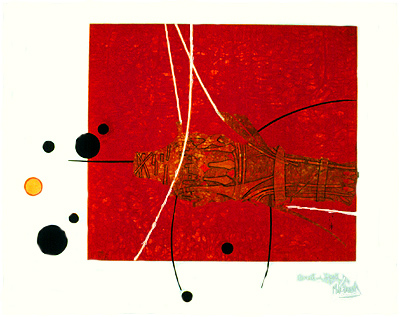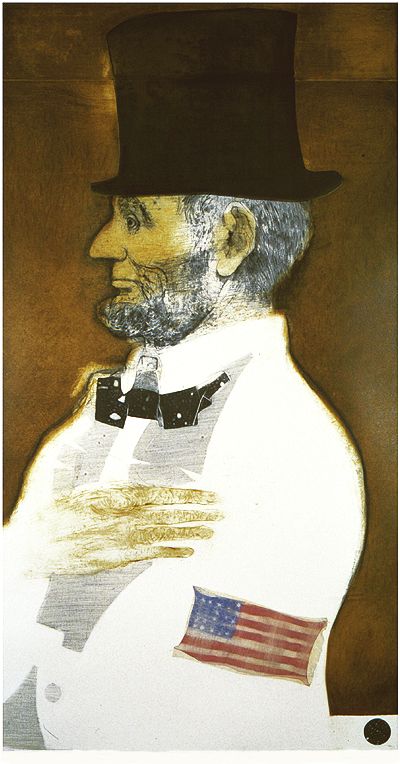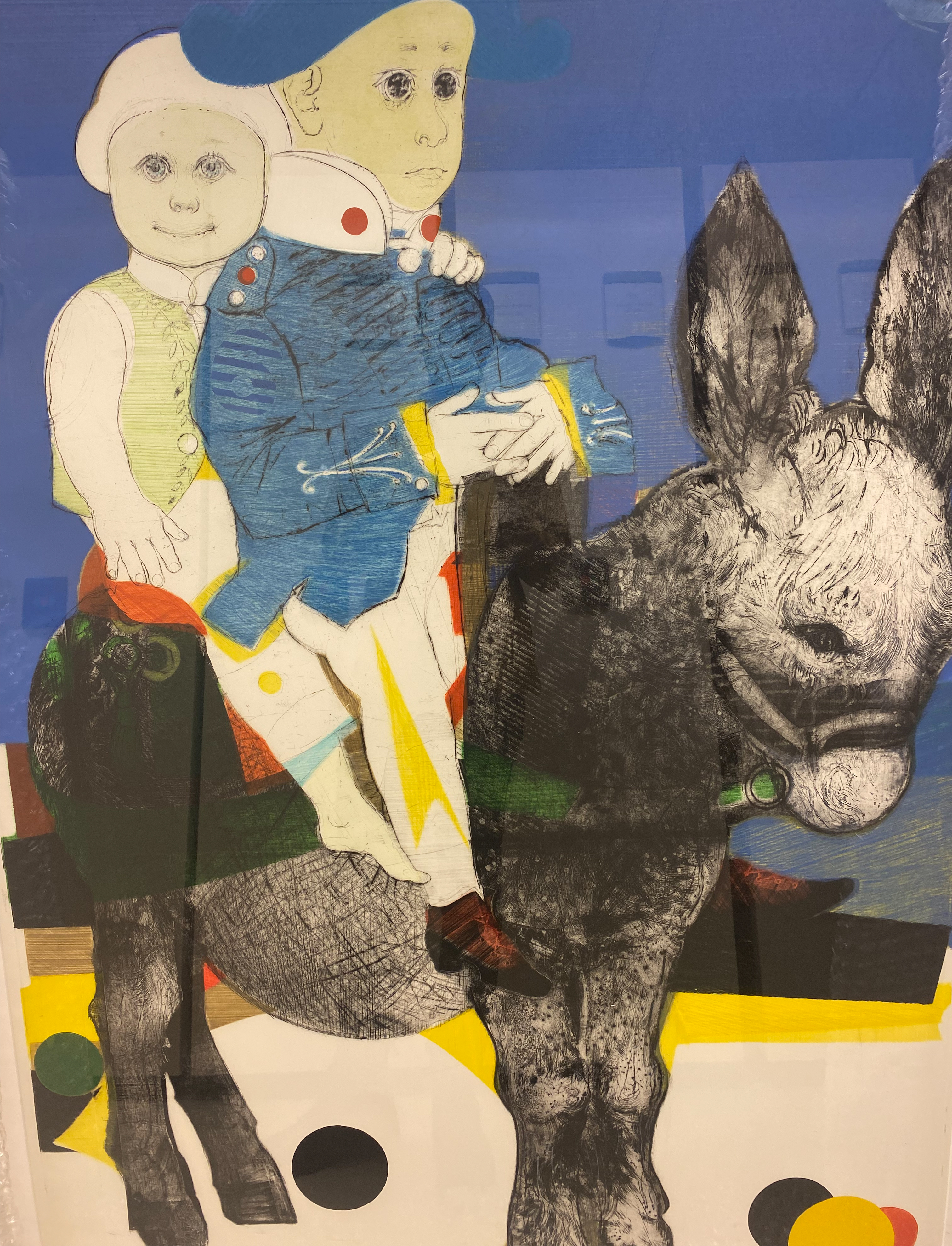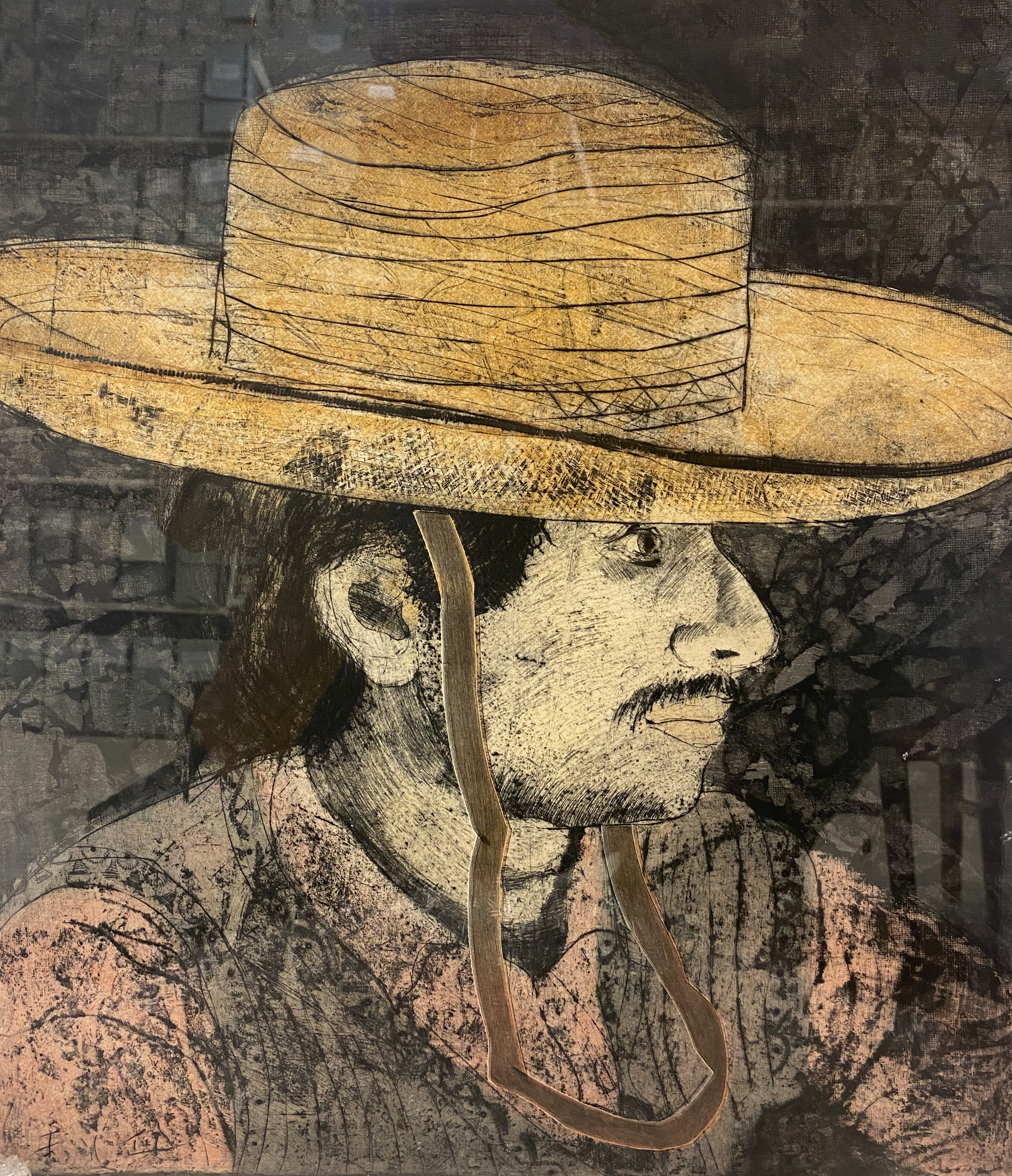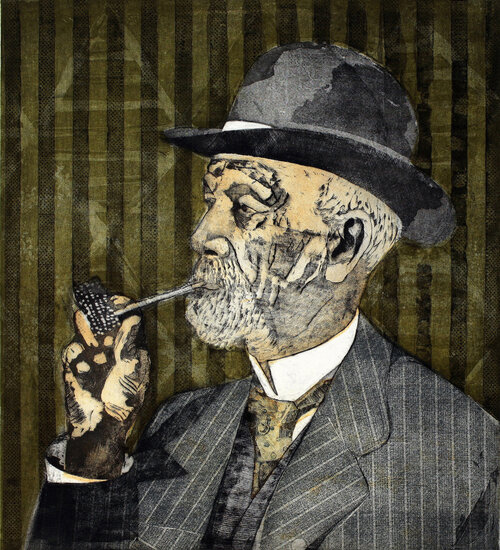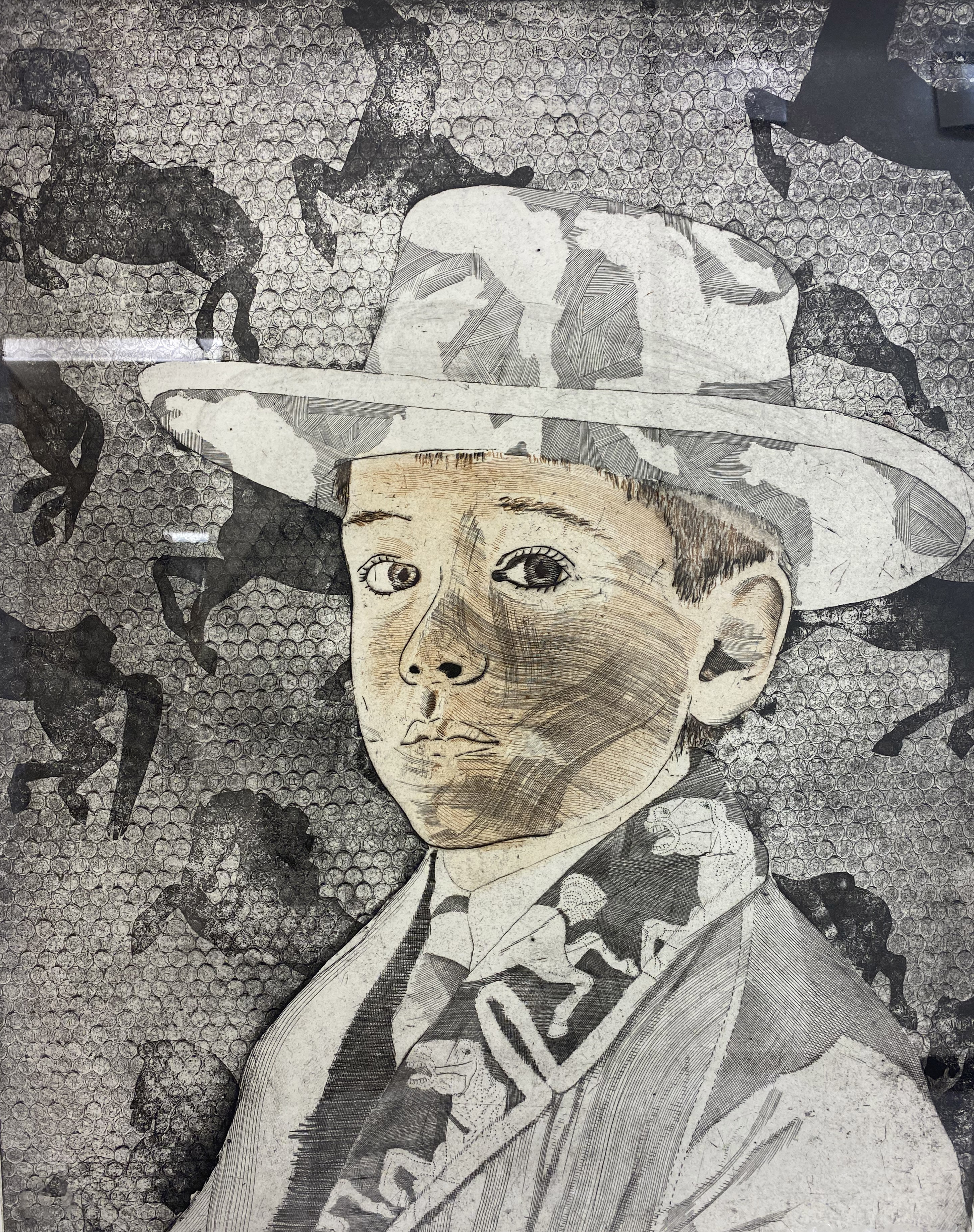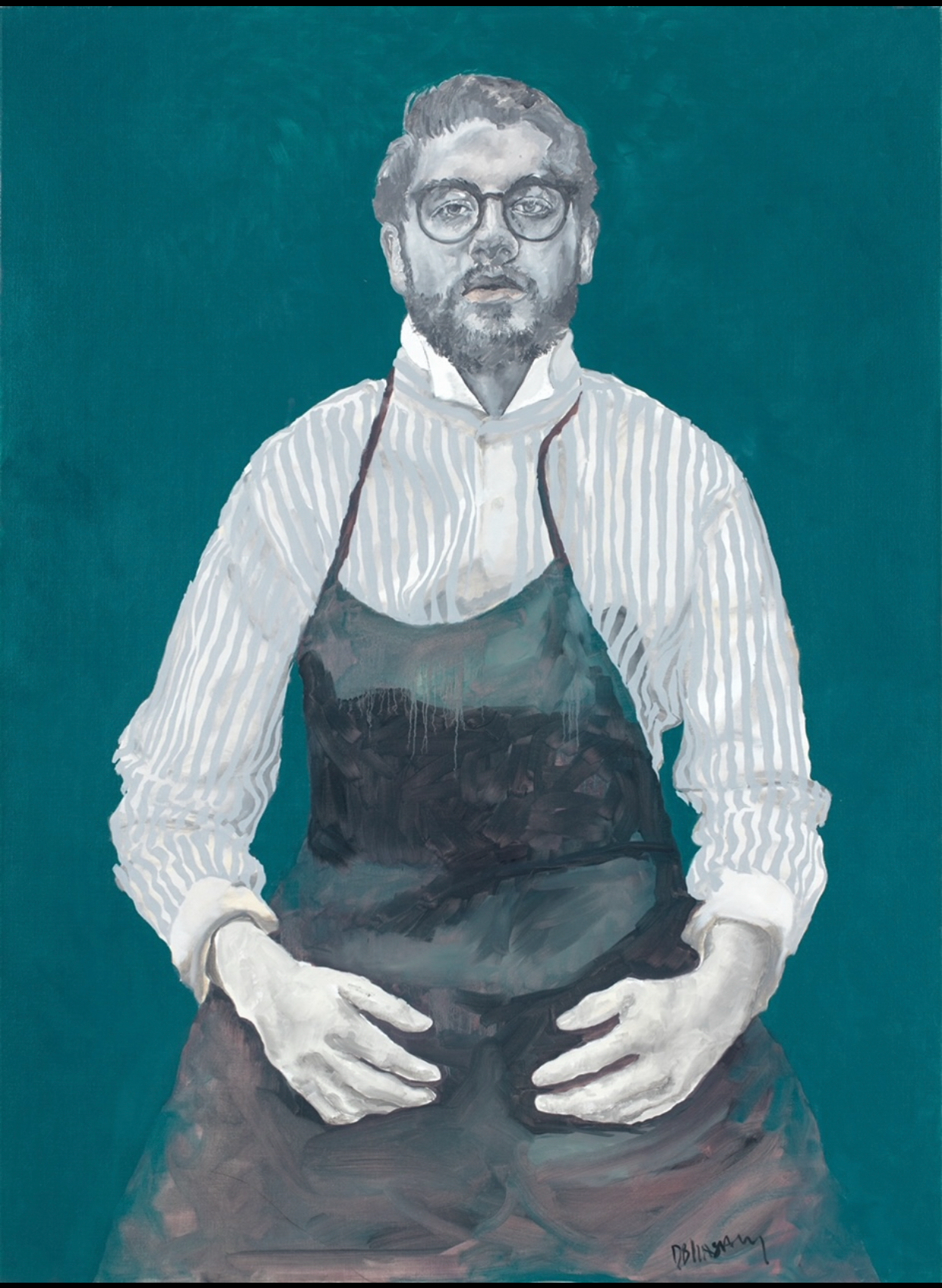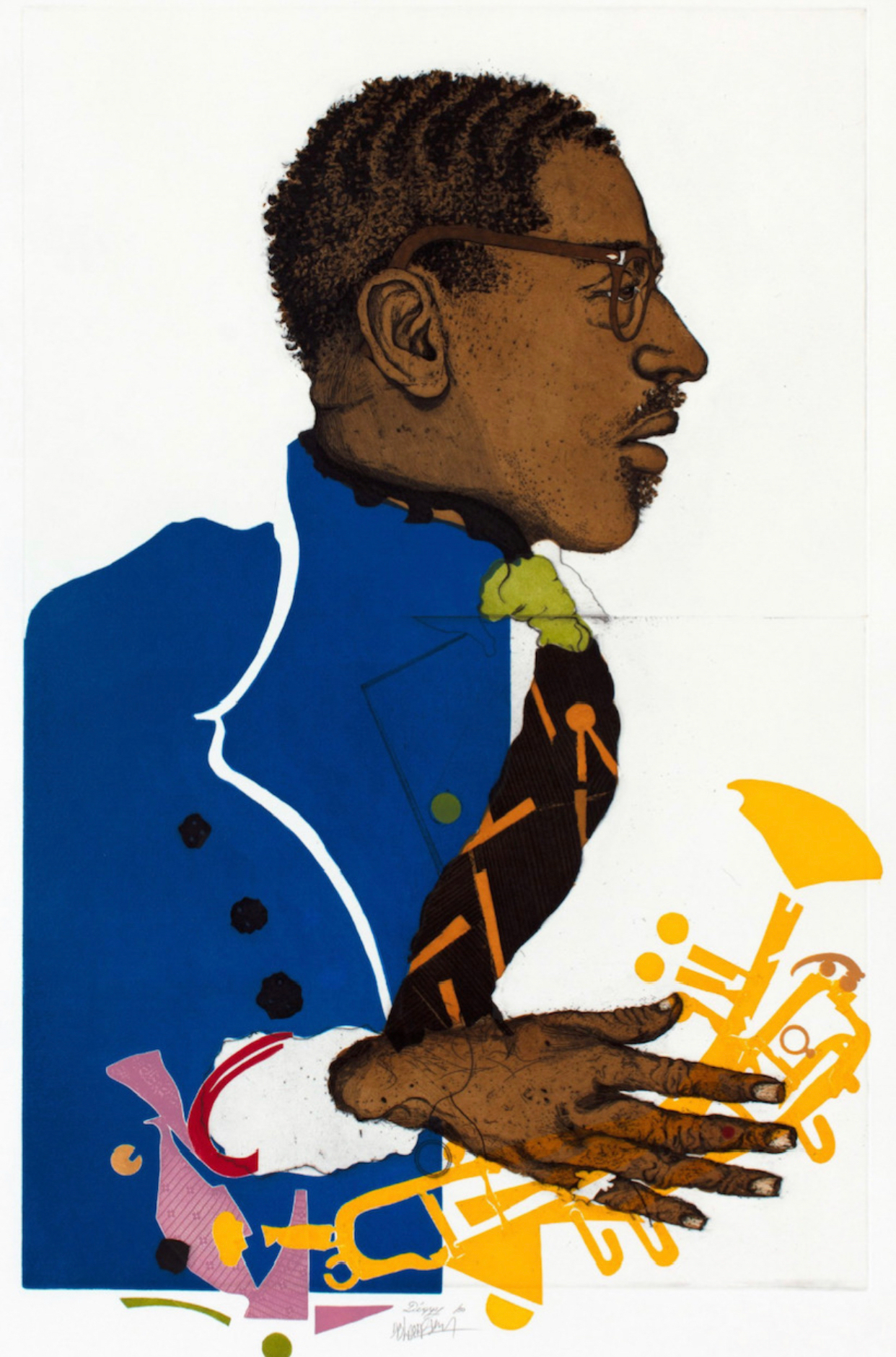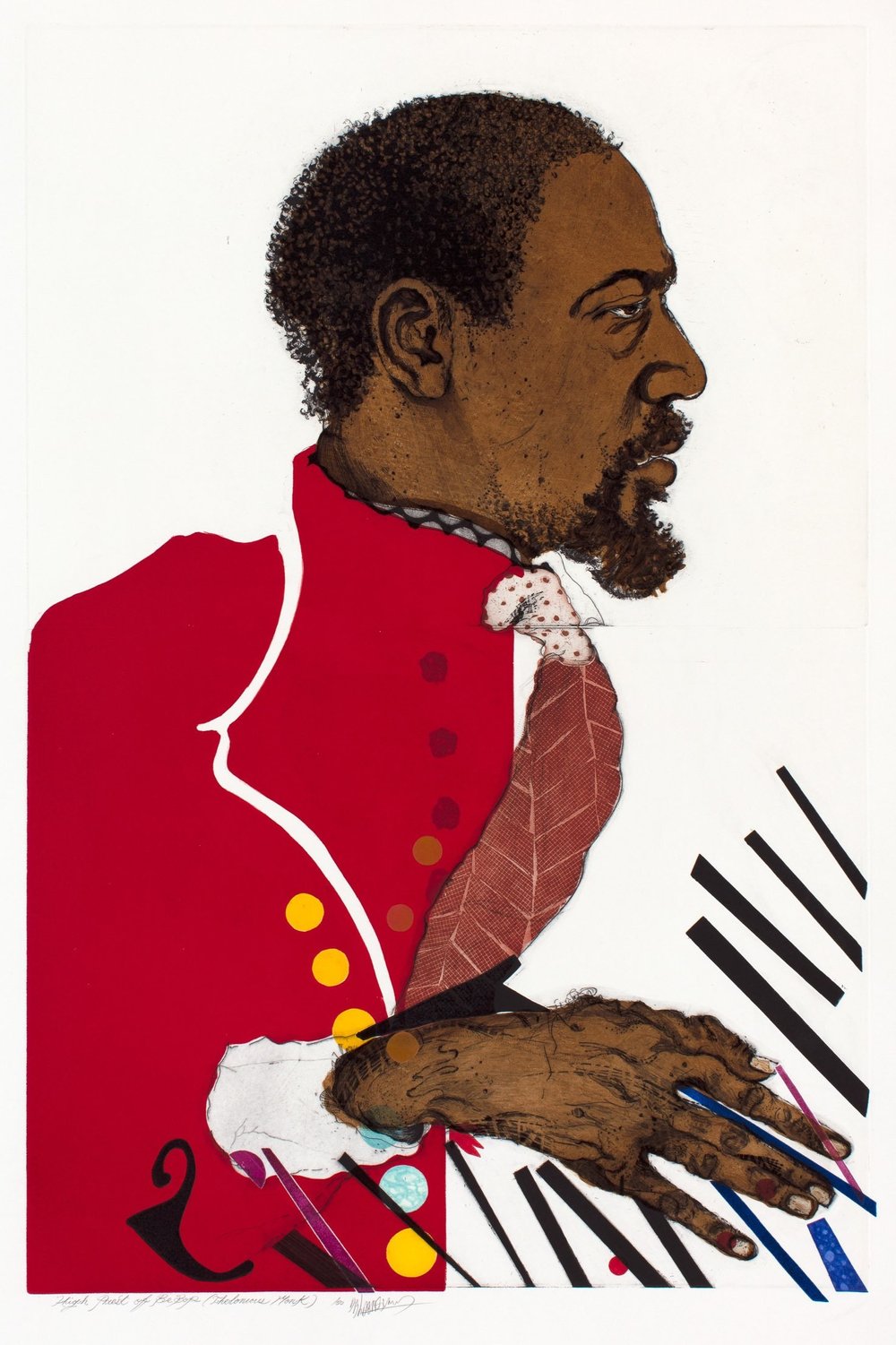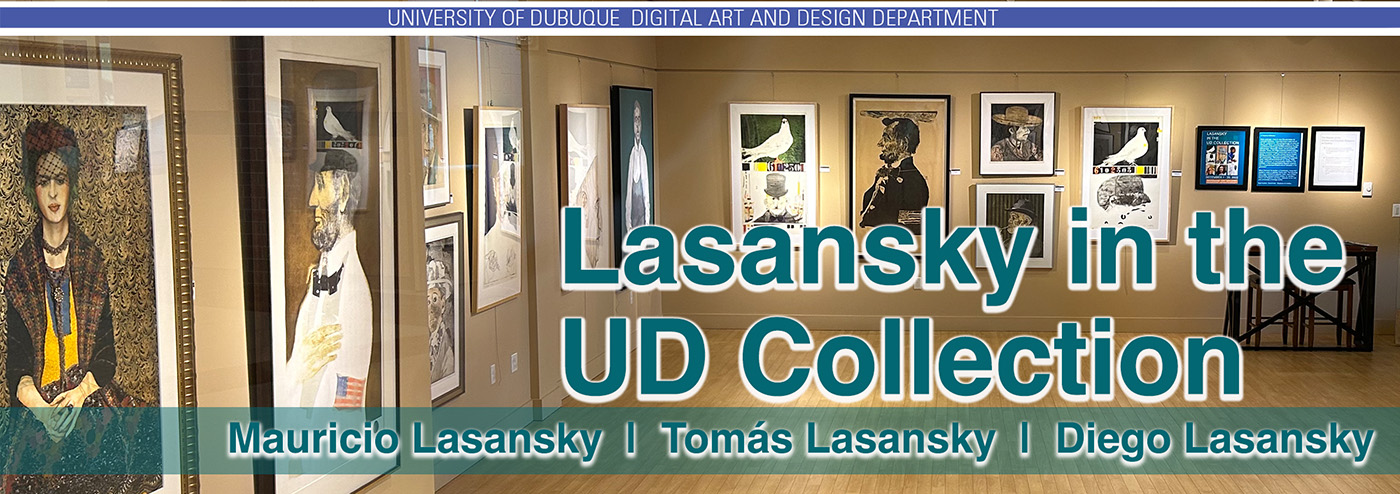
December 1-29, 2022. Lasansky in the UD Collection.
A Reflection - Gallery Coordinator
Many years ago, I went to Iowa City and visited the Lasansky Workshop. At the time I wasn’t really into art. Nor did I understand it. But walking through the shop and talking with Tomás Lasansky flipped a switch in my head. I was drawn to these large portraits of influential people from our past. They’re big, vibrant, and full of texture. Mauricio, Tomás, and Diego Lasansky combine painting, drawing and printmaking to create these one-of-a-kind pieces. In a sense, each artist reminds me of a modern-day Rembrandt using some of the same techniques. As the years went by, I met other members of the Lasansky family, artists and all involved with art: Tomás, Phillip, Diego, and Charlie. All very successful following in the footsteps of their father/grandfather Mauricio Lasansky, one of the greatest printmakers and art educators of his generation.
When I first took the position of Coordinator, I knew that I wanted to curate a Lasansky Family show. The University has a large collection of Lasansky works, many of them permanently displayed around campus, so naturally a show in the Bisignano was fitting, especially for the 10th year anniversary of Heritage Center.
Noah Bullock, Coordinator
Bisignano Art Gallery
----------
The brochure that accompanies this exhibit was funded by a gallery grant generously given by Judith and Bill Crandall, alumni of UD. We are especially grateful for the cooperation by the Lasansky family in all aspects of this show. They have helped us in every step of the way. Also, it should be noted that this exhibit was curated, designed, and hung by Noah Bullock, Coordinator, of the Bisignano Art Gallery.
Lasansky in the UD Collection
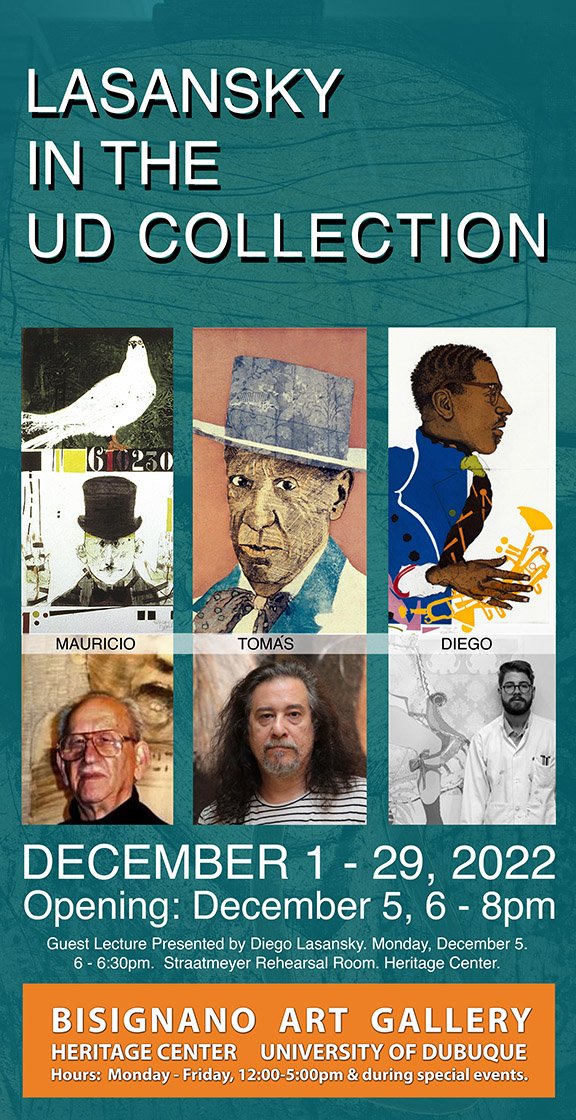
Gallery Director
The University’s collection of intaglio prints by the Lasansky family started with a major gift by the Gallery’s benefactor of Mauricio Lasansky’s Great Thinkers series. Clarissa Ferguson, Assistant to the VP of Finance at UD, informed me of these dozen intaglios and I hit the roof. Amazing. Lasansky intaglios here at UD. What a great teaching tool; what great art. In no time, I organized the students in my museum studies course to mount our first show of Mauricio Lasansky’s work in the Bisignano Art Gallery in April 2013. This was our inaugural exhibition in the Gallery.
Since then, the University has acquired many more Mauricio Lasansky works (the father). In addition, through special funding via the President’s Office and through gifts, the University has expanded its reach to include the Lasansky family of artists: Tomás (the son) and Diego (son of Phillip, nephew of Tomás and Mauricio’s grandson). You’ve heard of the concept of “life-long-learning”? This is a family that believes in “life-long-artistic-production”.
My introduction to artist Mauricio Lasansky’s printmaking came decades ago when, foolishly, I enrolled in a printmaking course as an undergraduate art student at the University of Iowa. Long before the end of that course, I knew (really knew) that I wasn’t a printmaker. What I did gain was an amazing appreciation for the detailed work, design, and planning that were required to complete a Lasansky print. In the ensuing years, I renewed by friendship with Professor Lasansky’s son, Phillip, who (until his recent death in January 2020) directed the Lasansky Corporation Gallery in Iowa City. Phillip’s joy for art and life was truly contagious. But I was never far away from that Lasansky intaglio process. In the mid-1970s I taught at Creighton University where one of Mauricio’s proteges, John Thein, was a colleague. We talked about his process and his dedication to the intaglio form often. From my mistaken start to now, it seems that Mauricio Lasansky’s unique quality of line and color has never abandoned me and it is true, you can spot a Lasansky at a distance – not so much through the subject matter but through the form. He was a formalist through-and-through. While large, clean color field painting seemed all the rage in certain contemporary galleries in 1970s Soho, Lasansky’s large scale, multi-plated figurative images kept traditional intaglio technique and figurative art in focus for the rest of us. I must agree with those who label Mauricio Lasansky as the “father” of modern printmaking in America.
So just who’s who in our show? A quick biographical sketch might help.
Mauricio (the father).
Mauricio Lasansky (1914 – 2012) is often considered to be a “father” of American printmaking, and, according to Time Magazine in the 1960s, “the nation’s most influential printmaker.” Lasansky was born in Buenos Aires, Argentina, in 1914. As an artist whose importance has been widely recognized, his work can be found in private collections and over 140 museums nationwide, as well as in Europe and Latin America. During his long career until his death in 2012, he had more than 250 solo shows in thirty-five countries and received six honorary doctorate of arts degrees.
Tomás (the son).
Tomás Lasansky was born in Iowa City, Iowa in 1957. The human figure and portraits of icons and personal muses have been dominant themes throughout his distinguished career. A master of drawing, painting, ceramics, and intaglio printmaking, Tomás uses aspects from each to create richly textured canvases and works on paper characterized by bold colors and multiple layers of lyrical mark-making. His art is shown and collected widely in the United States and U.S. Embassies around the world and has been the subject of several museum exhibitions including at the Butler Museum of American Art, The Snite Museum, and recently the retrospective Tomás and Charlie Lasansky: An Artistic Union at the Cedar Rapids Museum of Art.
Diego (son of Phillip, nephew of Tomás; grandson of Mauricio).
Diego Lasansky (b.1994) is an American artist whose focus is on painting, drawing and printmaking. Prior to his formal college education, Lasansky learned artistic processes from his uncle, Tomás Lasansky, and grandfather, Mauricio Lasansky. In 2015, Lasansky had his first solo exhibition featuring paintings, drawings and prints. His exhibition was accompanied by a monograph, Diego Lasansky: Paintings, Drawings, Prints. Lasansky’s print series of Martin Luther found international success as the entire edition was gifted to Lutheran universities and institutions around the world. Lasansky’s work follows a tradition of portraiture utilizing historical themes while maintaining an influence of a contemporary world. Lasansky has maintained a studio space in Iowa City for over ten years.
About the works.
There’s something familiar about these men and women, though most of us have never met them. There’s a “free-floating“ intimacy at work that pitches viewers into unfamiliar territories. Even when there’s some sort of background in these large prints, there’s little support to show us what these folks (or more particularly their artist-creators) are thinking about. Everything about them reminds me of a stroll through a national portrait gallery (I’m thinking of Washington's or London's massive national portrait galleries). These portraits of famous or just familiar (to the artist) persons are presented both as phenomena and as stereotype. There is no satire here in these much larger than life scenes. And I wonder why.
It's as if Swift's protagonist in Gulliver's Travels (Lemuel Gulliver, a surgeon and sea captain who visits remote regions of the world) created his own personal art show based upon his second voyage. Those Brobdingnags were larger than life, you remember, but quiet and introspective. And so too these prints. Mauricio’s Lincoln is in profile and pensive; Tomás’ Picasso stares out at us as if ready to speak. Diego’s Thelonious Monk calmly tickles the floating, meandering black piano keys. We suspect all these people are sincerely happy to meet us, or at least we get the feeling that we are not upsetting them or invading their spaces. What does it mean for Mauricio, Tomás or Diego to create these figures - some famous and some family – in a country still divided by social, environmental and racial factors?
Alan Garfield, Director
Bisignano Art Gallery


